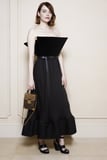Museum of Motherhood in St. Petersburg, Florida
At the Museum of Motherhood, you can sit in a chair made of fabricated breasts, sculpt body parts out of clay, strap on a vest that lets you feel what it’s like to be pregnant, or call your mother from a phone shaped like a pair of giant red lips. Founded in New York in 2003, the museum traveled around the country before finding its current home in St. Pete’s Warehouse District, just five minutes from downtown, inside an arts and event space known as the Factory. The Museum of Motherhood is the creation of artist and activist Martha Joy Rose. It was born from her personal experience with a lupus diagnosis following the birth of her fourth child. The inflammatory disease led to a kidney transplant and a lifelong study of and commitment to women’s issues. At the museum, you can learn about the scientific process of childbirth with a game of “Down the Canal,” or play with anatomically correct dolls. Other exhibits showcase irons, African birthing chairs, and other historical artifacts that share the history of motherhood in different time periods and parts of the world. On the first Thursday of the month, the museum features programming about women in the arts. There are regular classes, film screenings, and other events, which range from conversations with midwives to concerts.


At the Museum of Motherhood, you can sit in a chair made of fabricated breasts, sculpt body parts out of clay, strap on a vest that lets you feel what it’s like to be pregnant, or call your mother from a phone shaped like a pair of giant red lips.
Founded in New York in 2003, the museum traveled around the country before finding its current home in St. Pete’s Warehouse District, just five minutes from downtown, inside an arts and event space known as the Factory.
The Museum of Motherhood is the creation of artist and activist Martha Joy Rose. It was born from her personal experience with a lupus diagnosis following the birth of her fourth child. The inflammatory disease led to a kidney transplant and a lifelong study of and commitment to women’s issues.
At the museum, you can learn about the scientific process of childbirth with a game of “Down the Canal,” or play with anatomically correct dolls. Other exhibits showcase irons, African birthing chairs, and other historical artifacts that share the history of motherhood in different time periods and parts of the world.
On the first Thursday of the month, the museum features programming about women in the arts. There are regular classes, film screenings, and other events, which range from conversations with midwives to concerts.
What's Your Reaction?




























:quality(85):upscale()/2024/01/25/878/n/1922153/f94f61ec65b2bf18018990.47538761_.jpg)

:quality(85):upscale()/2024/01/26/759/n/29590734/b7f6660b65b3e8460d7196.77057039_.jpg)
:quality(85):upscale()/2024/01/27/741/n/1922153/8d43a26665b533b214de01.38307153_.jpg)











